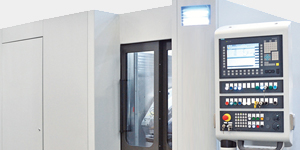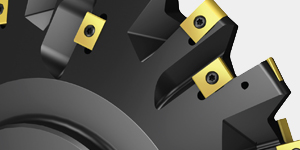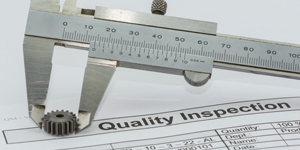Precise measurement and quality control continue to gain ground in 2025. Customers are calling for higher product performance and reliability, driving manufacturers to maintain more stringent quality management practices. Companies must also navigate the barrage of technological changes. Trends such as smart factories, AI, and digital twins are seeing increased adoption along with automation. Connected, data-driven factories are becoming the norm as manufacturers look for real-time information on predictive maintenance, workflow, and other key contributors to supply chain optimization.
Traditionally, gauges, testers, and CNC equipment have been used to create high-end gears, but in today’s digitized landscape, the majority of gear-checking machines lack the ability to perform multi-sensor inspections. Increasingly, complex designs, geometries, features, and tolerances have pushed multi-sensor 5-axis coordinate measuring machines (CMM) to the forefront when it comes to inspecting and measuring custom and high-performance gears.
5-Axis CMM advantages
In addition to faster, more accurate and more comprehensive measurement capabilities, 5-axis CMMs can reduce setup times, support faster data collection and help to streamline quality control processes.
AIMS Metrology’s lab-grade LM, for example, offers multi-sensor capabilities with REVO-2, which provides measuring speeds up to 500 mm/second and data collection rates of up to 4,000 points per second for increased part throughput. The mobile HB, fitted with a 5-axis PH20, can be placed on or near a production line to provide dimensional verification and process flow monitoring in real time. Unlike a conventional indexable probe, which is limited in scope, a 5-axis probe head provides infinite positioning
“The more precise the parts the more critical your process control has to be,” said Thomas Ayers, sales and business development director (Southeast) for AIMS. “With tight tolerance work, you are required to have high-precision inspection equipment and methods to ensure your parts meet specifications.”
According to Ayers, adoption of multi-sensor hardware isn’t always the biggest obstacle.
“Manufacturers can find it difficult to let go of legacy software,” he said. “In this digitized market, a 5-axis CMM can collect more data faster and provide a more comprehensive picture of a part’s dimensions and characteristics. But you can’t run a 5-axis machine with legacy software. We help manufacturers make that transition by writing their initial programs for them. This allows a company to hit the ground running with parts inspection. Most companies have an 80/20 rule. We try to focus on the jobs that make up 80 percent of a manufacturer’s work flow to help them achieve return on investment quicker and get parts out the door faster. Our ability to tailor different software packages to a customer’s applications means they aren’t pigeonholed into a specific product.”
 Legacy system limitations
Legacy system limitations
Holding on to legacy software systems also can result in higher costs and greater inefficiencies. Older systems require more maintenance, which can contribute to more downtime. Companies that don’t keep pace with evolving technologies may also miss out on opportunities for automation, integration and process optimization.
“Until now software systems have proved to be somewhat of a stumbling block,” Ayers said. “Lack of user friendliness combined with ongoing labor shortages can make it difficult for companies to mine the quality control data they need. To stay competitive, companies need to evaluate their current systems and invest in solutions specifically designed to accommodate the requirements and capabilities of a 5-axis CMM.”
A company’s parts should be evaluated to help it answer several critical questions: Do parts need to be measured on the shop floor at the point of manufacturing or inspected in a laboratory environment? Would the parts being analyzed lend themselves to automated inspection in a production cell? Probe selection is based on whether a part needs tactile inspection or 5-axis multi-sensor measurement. Modern 5-axis software is designed for integration into automated processes or existing Cloud-based ERP and MRP business management suites.
“We can teach an employee how to use a software product like CMM-Manager in three days versus weeks with conventional systems,” Ayers said.
Single and dual probe configurations
For gear manufacturers with products that may not warrant multi-sensor 5-axis inspection, but still need to keep pace with the demands of changing quality requirements, a programmable 3D measuring machine with single or dual probe configurations, is well suited for measuring various gear parameters.
“When it comes to product inspection in a manufacturing landscape that is adapting to Quality 4.0, there is no one-size-fits-all solution,” Ayers said. “That’s why, over the last two years, AIMS has expanded its reach through activities such as partnering with Itaca Srl to bring its FlexGauge to the North American market.”
The shop floor flexible gauging system is suited to applications that require tactile scanning for small, high-precision parts and high-speed manufacturing. It has a space-saving profile yet is engineered to provide micron accuracy in a job shop environment. A granite base and moving column resist temperature fluctuations while a glass ceramic scale with 0.1-micron measurement capability supports high accuracy at production sites housed in harsh environments. The FlexGauge is especially suited to parts inspection for components ranging from gears, CV joints, and other complex components such as brake calipers, hub and bearing rings, and camshafts.
“Our goal is to give manufacturers the right inspection and measurement tool,” Ayers said. “The FlexGauge falls under the umbrella of our product offering by giving customers a fully traceable, highly accurate gauge that can perform inspections without the need for master parts. It replaces an entire workbench of hand or air gauges. We have an in-house service group that can tailor FlexGauge to a customer’s specific application by changing out parts. It is a highly accurate option for high-production, high throughput operations. It’s really about listening to customers and anticipating what they will need to thrive and help future-proof part quality in an industry that is rapidly changing.”




























